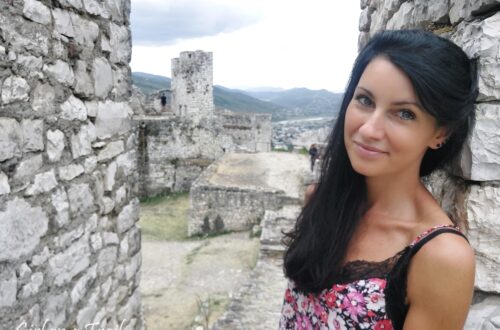-
Luxor – the world’s largest open-air museum
Luxor is also called the world’s largest open-air museum. Indeed, there are so many tourist attractions that you could easily spend a week or even longer here. The city was built around 1400 BC and was better known as ancient Thebes. Observing Luxor and its surroundings, you can imagine that this place must have been very impressive at that time. Even now, despite the fact that several thousand years have passed, you can still feel the power of ancient Egypt. Thebes was an important religious centre as evidenced by the number of religious objects that have survived to this day. In the eastern part of Luxor there’s the Temple of…
-
Albania – north direction
Albania has recently become a popular destination. There’re many reasons: beautiful beaches, interesting monuments, good food and even better prices. During my 10-day stay, I managed to visit a large part of this country. I must admit that Albania has enormous potential, which the country seems to have not fully exploited. There is no investment in tourist infrastructure and no waste management. Rubbish seems to be an inherent element of the Albanian landscape. However, the main problem for me was the dramatic condition of the roads, which significantly limited the number of places I could see in such a short time. Despite everything, I believe that Albania is a country…
-
Abu Simbel – Egypt, buried temples and mirage
Abu Simbel is one of the greatest tourist attractions of Egypt, right behind the Pyramids of Giza. It’s located on the far southern part of Egypt, just below the Sudan border, actually in the middle of nowhere, or more specifically, in the middle of the Sahara desert, far from any civilization. Reason enough to be here as life here is very different than in the rest of Egypt. Abu Simbel consists of two temples: Ramses’es II and his wife Nefertari’s. The Temple of Ramses is dedicated to the sun gods Amon-Re, Re-Horachte and to Ptah – the god of arts and crafts. The entrance to the temple makes an amazing…
-
Northern Israel – Sea of Galilee, Nazareth, Tzafad
Northern Israel is the main destination for many pilgrims coming to the Holy Land. Beyond Jerusalem here are the main points of the Christian religion, known from the New Testament. We started our trip with Nazareth, where Archangel Gabriel told Mary that she would have a son, whom she was to name Jesus. The main purpose of the trips here, is Basilica of the Annuciation – a place where according to the beliefs the annunciation took place. Basilica is one of the most important temples for Christians, right after the Church of the Holy Sepulchre in Jerusalem and the Basilica of the Nativity in Bethlehem. Basilica is huge and significantly…
-
Western Armenia, must – see places, part II
The next destination in Armenia, just after the Armenian Stonhenge (which I wrote about in the first part) was Monastyr Tatev. As we’re getting closer and closer, the road became more and more winding and mountainous. On the other hand, visibility decreased with every meter covered, actually directly proportional to the disappearing asphalt on the road. Aside from the fact that we were heading to the most popular monastery in Armenia, it looked like it was one of those places in the middle of nowhere. Tatev Monastery is mainly famous for its spectacular location in the Vorotan Canyon. The initial plan included a ride to the site by one of…
-
Campeche and Uxmal – two civilizations
Uxmal is the second most – important Mayan city in Mexico, just after Chichen Itza. The city is famous for its architecture and ornamentation. The most surprising is the fact that there’re no drinking water reservoirs in the surroundings and even there’s no evidence that they existed. Probably, potable water was being cached during rains and used in the dry season. The lack of water resources explains the abundance of reliefs presenting Chaca – god of rain. The most representative point is the Pyramid of the Magician, towering over the city. Similarly to Chichen Itza, this pyramid was being used for ritual purposes. During rituals, priests offered still beating hearts…





















